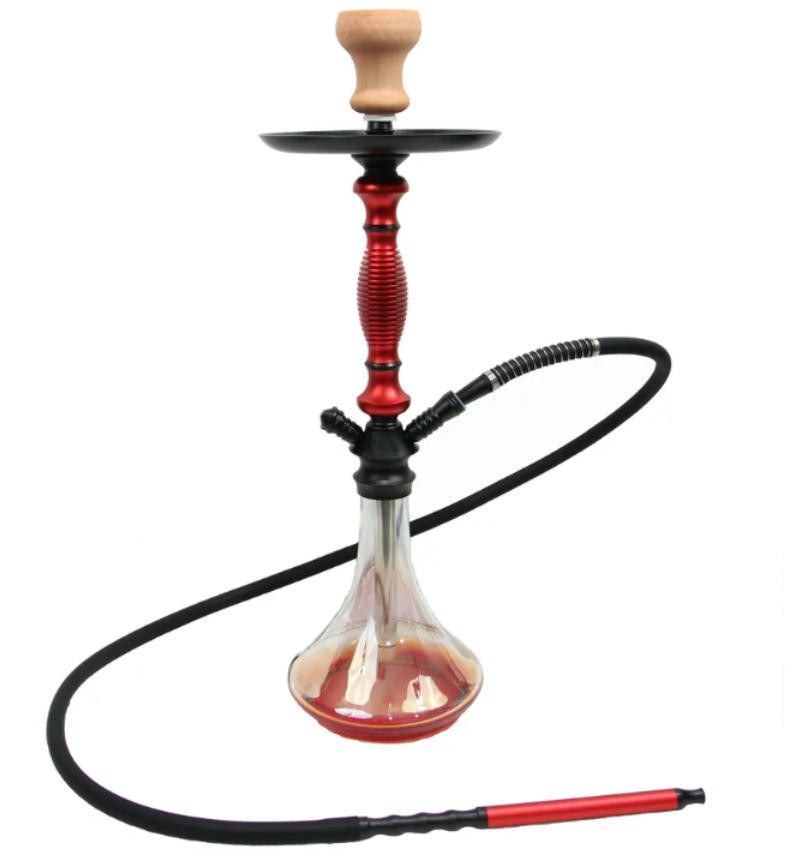



Product Item:AL-RE01
Aluminum Hookah
Hookah Wholesale
High quality
| Item No. | AL-RE01 |
|---|---|
| Material | ALUMINUM ALLOY |
| Height | About 40m |
| Color RED | |
| Weight | About 500g |
| Packing6 | pcs/ctn (Can be packed as required) |
| Shipment | By sea,express(DHL,Fedex,UPS and so on) or air |
| Payment | Trade Assurance,Paypal,Western Union and T/T |
| Produce Time | 5-20days (If the order is small, it can be shipped soon) |
| Delivery time | 10-30days |
| Customizable | OEM ODM |
The Red Snuff Bottle is a quintessential example of traditional Chinese craftsmanship, embodying both functional utility and profound artistic value. Originating during the Qing Dynasty (1644–1912), snuff bottles were small, portable containers designed to hold powdered tobacco, known as snuff, which was introduced to China by European missionaries and traders in the late 16th century. The red snuff bottle, distinguished by its striking red hue, is particularly notable for its cultural symbolism and aesthetic appeal, making it a cherished item among collectors and scholars of Chinese art.
Snuff bottles gained prominence in China as snuff became a fashionable stimulant among the elite, including the imperial court. The Qing emperors, particularly Kangxi, Yongzheng, and Qianlong, were known to have favored snuff, which spurred the development of these bottles as both practical objects and status symbols. The small size of the bottles—typically ranging from 5 to 10 centimeters in height—made them convenient for carrying, while their elaborate designs showcased the owner’s wealth and refined taste.
Red snuff bottles were crafted from a variety of materials, each requiring specialized techniques to achieve the desired color and finish. The most common materials include:
The interior of a snuff bottle was hollowed out to create a thin-walled vessel capable of holding a small amount of snuff. This process required exceptional precision, as the bottle needed to be both lightweight and durable. The exterior was often adorned with intricate designs, including landscapes, figures, animals, or symbolic motifs such as bats (representing happiness) or peonies (symbolizing wealth). Some red snuff bottles were further embellished with gilding, inlays of precious metals, or cloisonné enamel.
The red color of these snuff bottles holds profound cultural significance in Chinese tradition, symbolizing good fortune, happiness, and vitality. This made red snuff bottles particularly popular for gifting or as part of imperial collections. The designs on these bottles often carried symbolic meanings, with motifs drawn from Chinese mythology, literature, or Confucian and Daoist philosophies. For example, a red snuff bottle might depict the "Three Friends of Winter" (pine, bamboo, and plum), symbolizing resilience, or the Eight Immortals, representing longevity and spiritual power.
The stopper of a red snuff bottle was an integral part of its design, typically crafted from materials such as jade, coral, ivory, or metal. Attached to the stopper was a small spoon, often made of ivory or bone, used to scoop and dispense the snuff. The stopper was both functional and decorative, often carved or inlaid to complement the bottle’s aesthetic.
Creating a red snuff bottle required a combination of technical expertise and artistic vision. For glass bottles, artisans employed techniques such as blowing, carving, and polishing to achieve the desired shape and finish. Porcelain bottles involved complex firing processes to ensure the red glaze adhered properly without cracking. Lacquer bottles demanded multiple layers of resin, each painstakingly applied and dried, followed by detailed carving to create relief patterns. The level of skill required made these bottles a testament to the artisan’s mastery, and many were produced in imperial workshops or by renowned craftsmen in regions like Beijing, Yangzhou, or Guangzhou.
Beyond their practical use, red snuff bottles were miniature canvases for artistic expression, reflecting the cultural and aesthetic values of the Qing Dynasty. They were often commissioned by the imperial court or wealthy patrons, and some were inscribed with poetry, reign marks, or dedications, adding to their historical significance. The Qianlong Emperor (r. 1735–1796), in particular, was an avid collector, and many surviving snuff bottles bear his reign mark, indicating they were made for imperial use.
Today, red snuff bottles are highly sought after by collectors and are featured in major museum collections, such as those at the Metropolitan Museum of Art in New York or the Palace Museum in Beijing. Their value lies not only in their material and craftsmanship but also in their ability to encapsulate the artistic, social, and cultural history of China. Factors influencing a bottle’s value include its age, condition, provenance, and the complexity of its design. For example, a red glass overlay snuff bottle from the Qianlong period with intricate carving might fetch a high price at auction due to its rarity and historical significance.
While the use of snuff has largely faded, red snuff bottles remain enduring symbols of Chinese artistry. They are studied by historians and art enthusiasts for insights into Qing Dynasty aesthetics and material culture. Contemporary artisans occasionally create snuff bottles inspired by traditional techniques, though these are primarily decorative rather than functional. For collectors, red snuff bottles are prized for their beauty and the stories they tell, serving as tangible links to China’s rich artistic heritage.
In summary, the red snuff bottle is a remarkable artifact that combines utility, artistry, and cultural symbolism. Its vibrant color, intricate designs, and masterful craftsmanship make it a standout example of Chinese decorative arts, continuing to captivate and inspire admiration centuries after its creation.